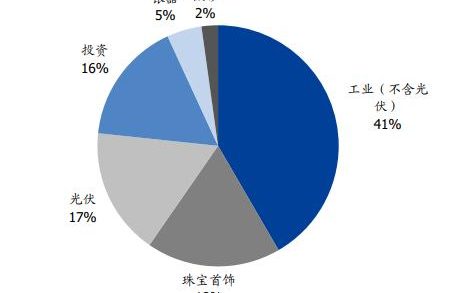I. Industry Risk Analysis
(1) Policy Risk
The policy risks currently faced by the dedicated panoramic shooting camera industry are concentrated in the stages of policy implementation and adjustment. As countries strengthen data privacy protection (such as GDPR and the Personal Information Protection Law), panoramic cameras may trigger privacy disputes among users due to high – precision image collection, leading to a sharp increase in compliance costs. Some countries, out of national security considerations, impose access restrictions or data localization requirements on geographic information collection devices (including panoramic cameras), increasing the risks of cross – border operations. In addition, the stricter environmental protection policies have promoted the upgrading of e – waste recycling standards, which may force enterprises to restructure their product designs and supply chains, and push up production costs in the short term. The continuity of industry support policies (such as VR industry subsidies) is uncertain. If the policies are phased out, it will directly impact market demand.
(2) Economic Risk
The dedicated panoramic shooting camera industry is currently under double pressure from the economic cycle. On the one hand, the slowdown of economic growth has led to budget cuts for B – end customers in industries such as film and television, and culture and tourism, and extended the procurement cycle of high – end equipment. On the other hand, in the C – end market, consumers are more inclined to choose mobile phone replacement products. The non – essential nature of professional equipment makes it the first to be affected in the trend of consumption downgrading. The accelerated technological iteration in the industry has put start – up enterprises in the dilemma of “mismatch between R & D investment and market return cycle”. During the economic downturn, the rising financing costs combined with supply – chain fluctuations have put pressure on cash flow. At the same time, the industry is facing the structural contradiction of hardware surplus and a lagging content ecosystem. The competition in the existing market has forced price wars, but a moat of differentiated technology has not yet been formed, and the profit margin continues to narrow.
(3) Social Risk
The dedicated panoramic shooting camera industry faces the risk of generational consumption gap. Generation Z has a strong demand for immersive content, but they are more inclined to use the panoramic function of mobile phones and rental services, and their willingness to buy dedicated equipment is lower than expected. Although the Millennials have professional shooting needs, they have turned to the second – hand equipment market due to consumption downgrading. The middle – aged group has a low acceptance of new equipment, and the cost of market education is high. At the same time, there are significant generational differences in privacy awareness. Young users are more sensitive to privacy issues in public spaces involved in panoramic shooting, which can easily lead to social disputes and stricter supervision. The enhanced rights – protection awareness of middle – aged users has led to frequent legal disputes, and brands are prone to fall into social public – opinion crises.
(4) Legal Risk
The legal risks faced by the dedicated panoramic shooting camera industry are concentrated in the fields of data privacy and intellectual property. Entrepreneurs need to ensure that the collection and storage of users’ image data comply with the requirements of the Personal Information Protection Law and the EU GDPR. Violations will result in high – value fines. Hardware design is likely to infringe on existing patented technologies, and software algorithms may involve violations of open – source agreements. Advertising must avoid false parameter labeling (such as exaggerated pixel claims), and product certification must meet the industry standards for imaging equipment in different countries. During cross – border sales, there may be restrictions on technology exports, and when accessing content platforms, entrepreneurs need to deal with differences in content review for image dissemination in different countries.
II. Entrepreneurship Guide
(1) Suggestions on Entrepreneurial Opportunities
Entrepreneurs in the dedicated panoramic shooting camera industry can focus on developing lightweight and cost – effective hardware for niche scenarios (such as cultural and tourism real estate, exhibition activities, and sports events), and match it with AI automatic stitching and multi – platform adaptation software to solve the pain points of existing equipment, such as being bulky, complex to operate, and having a high threshold for post – processing. To meet the needs of small and medium – sized content creators, they can launch equipment rental + cloud – based editing SaaS services to reduce users’ initial investment costs. By integrating drone and stabilizer manufacturers, they can develop panoramic shooting solution packages, and seize the incremental market of visualization needs in the digital transformation of B – end enterprises through cross – industry cooperation.
(2) Suggestions on Entrepreneurial Resources
Entrepreneurs should focus on establishing strategic partnerships with optical module suppliers in the upstream of the industrial chain to lock in the stable supply of high – precision fisheye lenses. Rely on university computer vision laboratories to obtain technical support for distortion correction algorithms, and apply for special subsidy funds for the VR/AR industry at the same time. Cooperate with cultural and tourism scenic spots and film and television bases to build a scenario – based case library, and conduct product testing and dissemination through top science and technology UP owners on Bilibili and Douyin. Access the developer communities of Unity/Unreal engines to obtain SDK adaptation resources, and jointly build a support plan for panoramic content creators with MCN agencies. Obtain flexible production solutions through ODM manufacturers such as Foxconn, and set up light – asset production lines in the industrial clusters in Dongguan or Suzhou.
(3) Suggestions on Entrepreneurial Teams
Entrepreneurs in the dedicated panoramic shooting camera industry should build a complementary team driven by both technological R & D and market insight. They should give priority to recruiting hardcore technical talents with skills in optical imaging algorithms and 3D modeling software, and at the same time, allocate business members familiar with vertical scenarios such as the film and television industry and cultural and tourism real estate. The founder should have the ability to turn hardware into products, and lead the integration of camera module suppliers and cloud rendering technology resources. There should be at least one core member with experience in imaging equipment supply – chain management in the team. It is recommended to adopt an agile collaboration model of “technology pre – research + scenario verification”, and align the needs with B – end customers such as film and television studios and VR content platforms on a monthly basis to quickly iterate and adapt to emerging needs such as 8K panoramic live – streaming and metaverse space modeling, and avoid falling into the trap of pure technical parameter competition.
(4) Suggestions on Entrepreneurial Risks
Entrepreneurs in the dedicated panoramic shooting camera industry need to focus on technological iteration and patent layout. They should first build a modular R & D framework to reduce the risk of hardware adaptation. It is recommended to choose a flexible solution of CMOS sensors + FPGA chips to cope with the pressure of algorithm upgrades. In supply – chain management, they should establish dual backup channels for Japanese and Korean optical components and closely monitor fluctuations in the yield rate of lens coating. During the market verification stage, they can adopt the B – end rental + C – end deposit system to reduce inventory overstock. They should develop SDK plug – ins for vertical fields such as culture and tourism and real estate to enhance customer stickiness. They should pay attention to avoiding privacy compliance risks in public – place shooting and connect to the Ministry of Public Security’s face – blurring API in advance. In terms of fund allocation, 30% of the budget should be invested in automated calibration equipment to control labor costs, and the cloud – service subscription model should be used to balance the initial cash flow.





